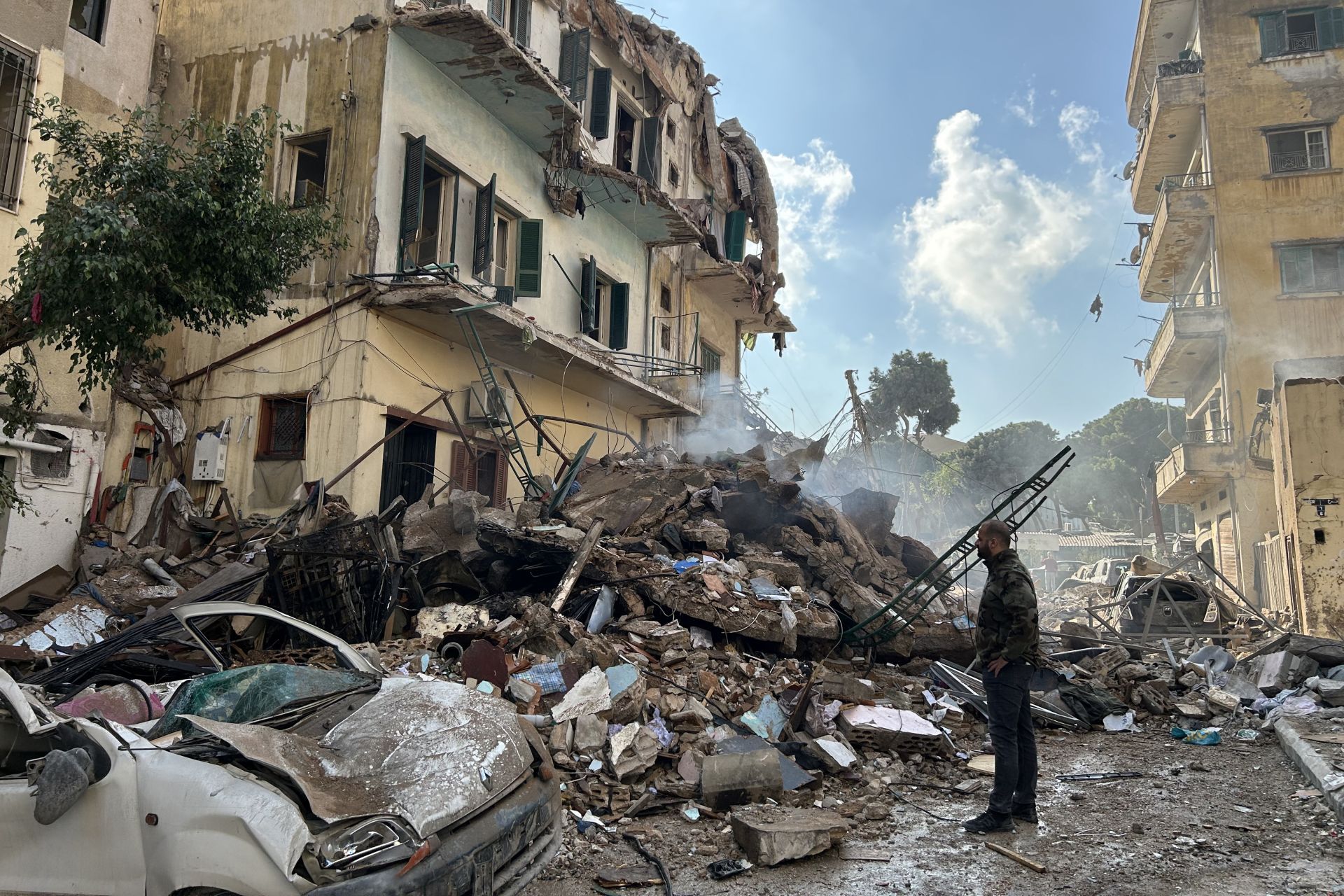
In light of the extensive destruction caused by Israeli strikes in Lebanon, rubble is piling up, prompting questions about what to do with it in the post-war phase. This is Beirut spoke with Khalil Abboud, a construction company director, to explore the options.
For nearly two months, Israel’s intensified offensive against Hezbollah has seen entire villages in southern Lebanon, neighborhoods in Beirut’s southern suburb, and towns in the Beqaa Valley nearly obliterated. The ongoing air raids have left huge mounds of rubble, though there is still no concrete estimate of the volume, given that Israeli strikes show no signs of abating.
Caretaker Public Works Minister Ali Hamiyeh has taken the initiative by discussing post-war rubble management and reconstruction with Prime Minister Najib Mikati. In a post on X, Hamiyeh indicated that he discussed the “legal and operational framework” for managing this rubble, an essential step before any rebuilding efforts can start.
The management of massive construction waste in post-conflict Lebanon isn’t new. Following the 1975-1990 civil war, rubble from destroyed buildings was used in landfill projects to create reclaimed land, as seen in the waterfront development in the Solidere district during Beirut’s reconstruction. Yet, using rubble for landfills isn’t the only — or even the best — option.
More promising are several strategies that reuse the enormous quantities of rubble accumulating daily, as the war continues to devastate large areas. These approaches create an economy that generates income and job opportunities, a critical need as Lebanon faces an economic crisis further strained by the conflict that was imposed on the country. What’s essential is to implement a smart and efficient rubble management plan, rather than a “dump it in the sea” approach.
Sorting, Crushing, Recycling
Khalil Abboud explains the key stages of rubble management to This is Beirut. The first step in handling rubble is sorting.
“You have to separate the various components: concrete, steel, and glass,” he notes. At this stage, certain waste materials like plastic, rubber, and broken objects must be set aside. “In some cases, plastic can be separated, though this is generally more challenging.”
“To accomplish this, jackhammers and equipment to break large slabs of concrete, along with essential manual labor for sorting, are necessary,” Abboud explains. Clean concrete can then be crushed, pulverized, and used as backfill, a material heavily utilized in construction. “In developed countries, this concrete can be processed more finely and used as subgrade material before asphalt paving,” Abboud adds.
Demolition concrete can also be used to lay foundations, level plots, or prepare sites for new construction. Larger concrete blocks can even be used in landscaping projects, such as retaining walls or walkways. According to Abboud, “It’s possible to produce a more durable, eco-friendly concrete by incorporating recycled materials.”
Glass, too, can be reused in multiple ways. Ziad Abichaker, founder and CEO of Cedar Environmental, a waste recycling company, set an example by using glass shards from the August 4, 2020 Beirut port explosion to make jugs, bottles, glasses, and other items.
The most valuable material remains steel, due to its market value. “Companies buy scrap steel by the ton at nearly half the standard price,” Abboud explains. “Factories specializing in metal processing recycle the steel and sell it for new uses.” Environmentally, “the advantage of recycled metal is its low carbon footprint, unlike metals extracted from mines,” Abboud adds. Glass can also be sorted and recycled, as was done after the 2020 Beirut port explosion.
While this profitable rubble management sector flourishes post-conflict, it has also always been active in construction locally. “Unused construction steel from a site is collected and sold to metal recycling companies,” says Abboud, explaining that this is a standard practice.
The Example of Syria
A rubble management project has been implemented in war-torn Syria, focusing on recycling and rebuilding. According to the Institute of Materials, Minerals, and Mining (IOM3), a team of researchers from the University of Sheffield in the UK suggested that recycled concrete from destroyed Syrian buildings could aid infrastructure reconstruction, replacing up to 50% of the raw materials needed to make new concrete.
Collaborating with the Middle East Technical University (Turkey) and Syrian academics in exile, the team manually sorted rubble collected from ten sites in al-Bab, northern Syria, according to a report published by the Institute in May 2023. The concrete was crushed onsite using a mobile jaw crusher to produce recycled concrete aggregates sized approximately 5mm to 25mm. These aggregates were mixed with cement and sand, replacing coarse aggregates in fresh concrete mixtures.
What Are the Prospects for Lebanon?
According to Abboud, Lebanon’s logistics are adequate for rubble management. Reflecting on the 2006 war between Hezbollah and Israel, he states that “a local company managed the debris removal for the entire southern suburb of Beirut.”
The local economy also saw a boost, with “half of Lebanon’s trucks involved in transporting rubble for the southern suburb alone,” Abboud says.
Ultimately, “it’s the Council for Development and Reconstruction (CDR) that is authorized to initiate tenders and select the company responsible for each project,” he concludes.




Comments